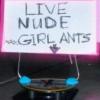need help identifying this ant species it was found it was found on a bathroom tile, yesterday their stings don't hurt either, that or they decided not to sting. They are mainly black from what I can tell at first I thought they were white-footed ant but am not sure. Location is south miami.


Edited by Antz, January 11 2019 - 8:27 AM.




















